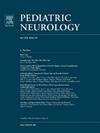LIPT2的双拷贝变异是婴儿期发病肌张力障碍的病因之一:扩展临床和分子谱系。
IF 3.2
3区 医学
Q2 CLINICAL NEUROLOGY
引用次数: 0
摘要
背景:脂酰转移酶 2 参与脂酸的生物合成。脂酸是甘氨酸裂解系统和四种脱氢酶的辅助因子。2017年首次描述了导致严重新生儿脑病的LIPT2双唇变异:在征得家长同意后,通过回顾性病历审查收集临床数据。利用酵母模型进一步确定了这些变异的致病性。以YEp352-LIPT2质粒为模板,使用QuickChange Lightning定点突变试剂盒生成患者的两个变体:患者是一名15个月大的女性,一个月大时出现肌张力障碍、发育迟缓和喂养困难。脑磁共振成像显示大脑皮层畸形,包括头盖骨畸形、多小脑畸形和异位畸形。患者的乳酸(6.1毫摩尔/升)和甘氨酸升高。外显子组测序显示,LIPT2 基因有两个意义不确定的反式变异:c.346 G>T 和 c.418C>T。患者开始服用硫辛酸、硫胺素和 COQ10。酵母互补实验表明,患者的两个突变变体都会导致 LIPT2 蛋白的功能减弱:我们报告了第四例 LIPT2 相关疾病。我们报告了第四例 LIPT2 相关疾病患者,该病例与之前的患者有明显的重叠;但是,患者有明显的运动障碍和脑部畸形,这在之前的病例中还没有出现过。与大多数神经代谢性疾病不同的是,肌张力障碍是在基底节发生代谢中风后才出现的,而LIPT2相关障碍则是由于发育中的大脑能量不足而导致肌张力障碍提前出现。补充硫辛酸并不能显著改善临床症状。在酵母中进行的分析表明,新的变体是有害的,但保留了一些功能。本文章由计算机程序翻译,如有差异,请以英文原文为准。
Biallelic Variants in LIPT2 as a Cause of Infantile-Onset Dystonia: Expanding the Clinical and Molecular Spectrum
Background
Lipoyl transferase 2 is involved in the biosynthesis of lipoate. Lipoate is the cofactor for the glycine cleavage system and four dehydrogenase enzymes. Biallelic variants in LIPT2 causing severe neonatal encephalopathy was first described in 2017.
Methods
Clinical data were collected by retrospective chart review after obtaining consent from parents. The pathogenicity of these variants was further delineated using a yeast model. The YEp352-LIPT2 plasmid was used as a template to generate the two patient variants using QuickChange Lightning Site-Directed Mutagenesis Kit.
Results
The patient was a 15-month-old female who presented at one month with dystonia, developmental delay, and feeding difficulties. Brain magnetic resonance imaging showed cortical malformations including colpocephaly, polymicrogyria, and heterotopia. Patient had elevations in lactate (6.1 mmol/L) and glycine. Exome sequencing showed two variants of uncertain significance in trans in the LIPT2 gene: c.346 G>T and c.418C>T. Patient was started on lipoic acid, thiamine, and COQ10. Yeast complementation experiments indicate that both patient mutant variants result in diminished function versions of the LIPT2 protein.
Conclusion
We report the fourth case of LIPT2-related disorder. Proband shared significant overlap with previous patients; however, there was a distinct movement disorder and brain malformations, which have not been previously described. Unlike most neurometabolic disorders where dystonia develops later after metabolic stroke in basal ganglia, LIPT2-related disorder seems unique due to early onset of dystonia due to energy deficit in the developing brain. Lipoic acid supplementation has not led to significant clinical improvement. Analyses in yeast indicate that novel variants are deleterious but have retained some functionality.
求助全文
通过发布文献求助,成功后即可免费获取论文全文。
去求助
来源期刊

Pediatric neurology
医学-临床神经学
CiteScore
4.80
自引率
2.60%
发文量
176
审稿时长
78 days
期刊介绍:
Pediatric Neurology publishes timely peer-reviewed clinical and research articles covering all aspects of the developing nervous system.
Pediatric Neurology features up-to-the-minute publication of the latest advances in the diagnosis, management, and treatment of pediatric neurologic disorders. The journal''s editor, E. Steve Roach, in conjunction with the team of Associate Editors, heads an internationally recognized editorial board, ensuring the most authoritative and extensive coverage of the field. Among the topics covered are: epilepsy, mitochondrial diseases, congenital malformations, chromosomopathies, peripheral neuropathies, perinatal and childhood stroke, cerebral palsy, as well as other diseases affecting the developing nervous system.
 求助内容:
求助内容: 应助结果提醒方式:
应助结果提醒方式:


